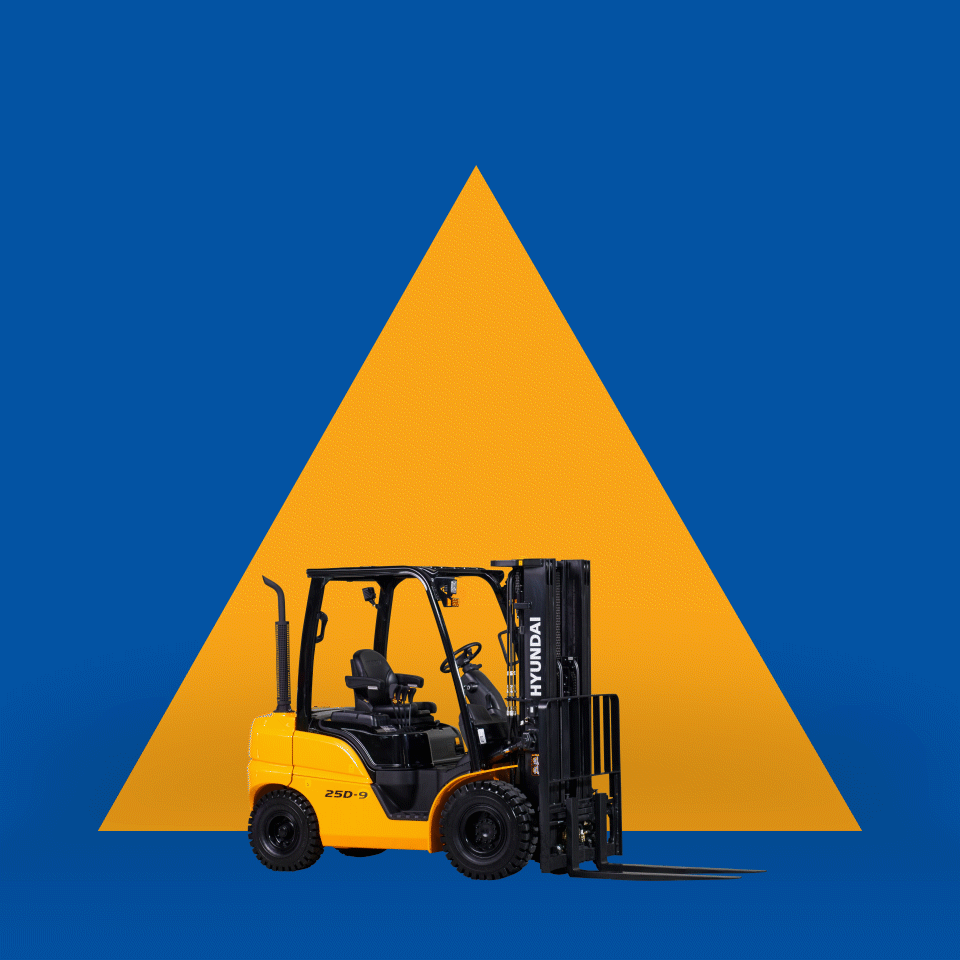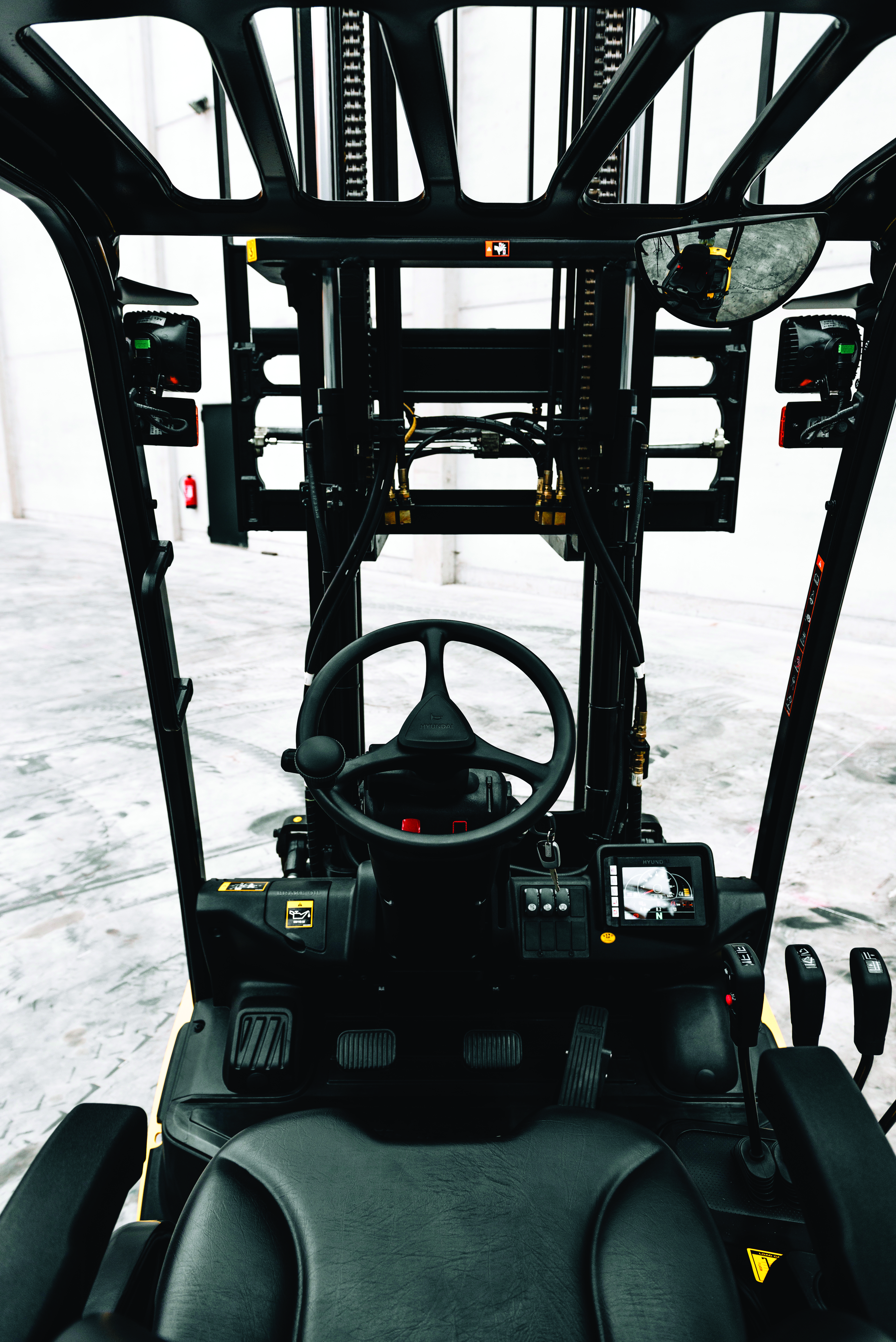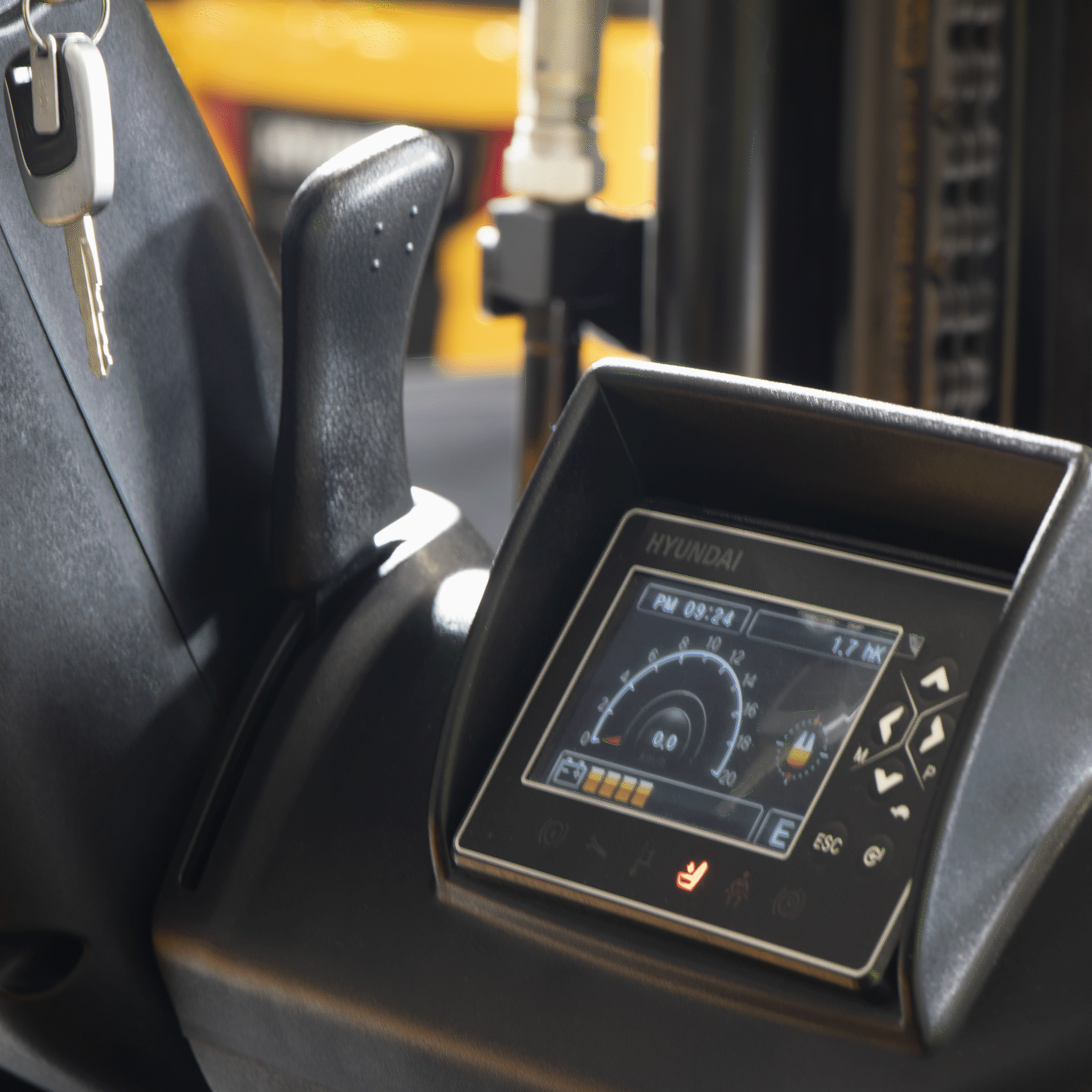Forklift maintenance and inspection: here’s what you can do yourself
17 December 2019
A forklift that isn’t properly looked after can become a hazard to everyone around it. Moreover, regular inspection and maintenance positively impact the lifespan of your equipment and will save repair money in the long run. That is why operators should always do a proper inspection routine of their vehicle, every time they use it.

Inspecting the forks
The forks are under constant strain and pressure, therefore, they are required by law to be examined before and after each use. Pay special attention for the following:
- surface cracks: if cracks are detected, the forks have to be replaced
- straightness of the blade and shank: if the deviation exceeds 0,5 percent of the length of the blade and/or height of the shank, the fork has to be repaired immediately
- fork angle: any fork that has a deviation of greater than 3 degrees from the original specification has to be repaired/replaced.
Inspecting the forklift heels, tips and hooks
Apart from the forks, the heels, tips and hooks should also be checked regularly for wear.
Heels
The heels are the metal pieces that form right angles inside the prongs or shafts of the forklift. They provide support for lifting. Check for:
- cracks: every time the forks carry load, the shafts of the forklift stretch and create fissures in the metal, which may increase in size
- width of the heel: when heels contact the floor, the bottom is worn down, especially on rough surfaces
- depth of the heel: measure with a fork calliper (measurement should be compared to the fork upright-shank width).
Hooks
Hooks allow loads to be lifted and suspended below the forks. They bear the load when raising and transporting items. If one breaks while cargo is in the air, the forklift may collapse. Before operators climb into the driver’s seat, they must make sure that the hooks are securely fastened to the shaft.
Tips
The tips are situated at the end of the forklift shafts or arms. When damaged, the prevent loads from engaging or disengaging properly and can cause frustration and timeloss. Typically, damage occurs when tips are used to push freight onto the hooks or if they graze building structures.
Like the heels, the tips should be assessed with a fork calliper and should be replaced when they are less than 3 percent higher than the length of the blade. For example, a 42-inch fork set may only have a tip height difference of 1 inch before replacement of repair is required.


Other features to check regularly
- Oil pressure is stable.
- Radiator has no leaks.
- Transmission fluid is translucent.
- Engine coolant is clear.
- Engine casing is firmly secure.
- Valves are air tight.
- Parts are well-fastened to the axle.
- Chassis is in good condition.
- Tires and prong chains are in good shape.
- Safety equipment is present.
Please make sure to only work with qualified operators, as they have received special training to not only drive but inspect their vehicle as well.